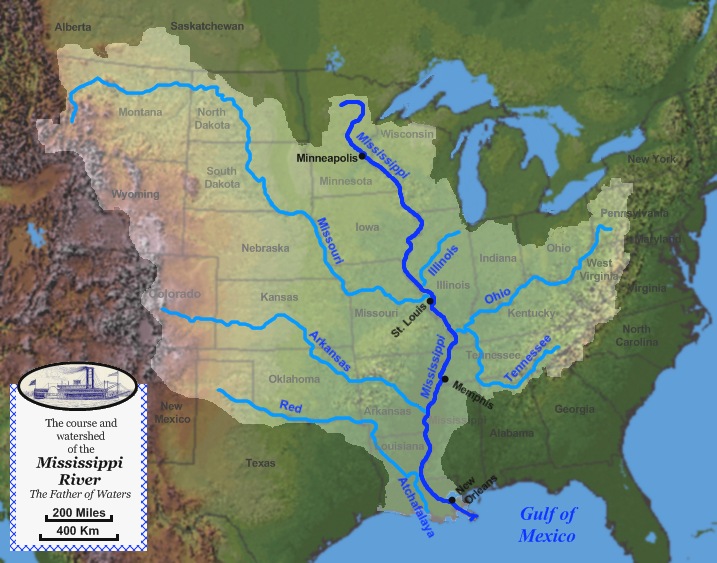When drought in the U.S. is mentioned, the first thing that comes to most people’s minds is the West, Southwest, and California in particular. There’s good reason for this. It’s been in the news every year. The rampant wildfires are terrible and spectacular. But the main threat of drought is to agriculture. California is the key to having nice things on our dinner tables. California produces 71 percent of the lettuce in the U.S, 90 percent of the strawberries, 99 percent of the garlic, 99 percent of the almonds, 99 percent of the grapes and world-class wines, and cantaloupes, watermelon, citrus, onions, celery, on and on. If we count the West Coast states, add apples, pears, cherries, and more.
Important as all that is to having nice things on the table, the meat and potatoes (literally), grains, and animal feed do not come from California. They come primarily from the middle of the country. The farmlands from Idaho, Montana, the Dakotas, Iowa, Nebraska, to Texas produce vast amounts of the staple foods we eat. In addition to feeding ourselves, the U.S. literally feeds the world.
How does all this stuff get where it’s going? Well, the United States was lucky. It came with a built-in railroad: the Mississippi River System.

175 million (!) tons of freight a year is shipped on the Upper Mississippi system alone. For perspective, that’s 20,000 to 30,000 loaded freight trains. Not freight cars, freight trains.
Then we come to the Lower Mississippi and exports. The Port of South Louisiana handles 500 million tons of freight each year. Ninety-two percent of U.S. agricultural exports pass through the Port of South Louisiana. This is 78 percent of the world’s exports of feed, soybeans, livestock, and hogs. Sixty percent of the world’s exported grain passes down the Mississippi to the Port of South Louisiana. For perspective, that’s sitting by a railroad track and watching 25,000 loaded freight cars go by every single day. That’s not even possible on a single track.
So what does drought have to do with this? The Mississippi River System drains the central portion of the U.S.A. from Minnesota and Wisconsin to Texas, Montana, Kansas, Nebraska, Ohio, Illinois, Indiana, and so on. Drought is affecting these places too and the first sign of this is the water levels up and down the Mississippi. The water levels got so low this year that the barges that carry freight up and down the river were getting stuck on the bottom and causing traffic jams.
The problem should now be obvious. If low water becomes more frequent, and because of climate change it almost certainly will, it’s a huge problem. One could easily prove the point that the lifeblood of the country flows up and down the Mississippi River System. It’s the main artery. Disruptions here will upset not just agricultural products but every industry that involves heavy river freight starting with fuel oil, crude oil, coal, coke, fertilizer, limestone, iron, cement, and a long list more. The economic effects of this are staggering, not just for the U.S.A. but the world.
Solutions? There aren’t any good ones. One could build rail lines that parallel the river and tributaries, but this is a big project and cannot be done quickly. The land easement problems alone would take decades to sort out in the courts. More dams and locks on the river? This is possible in some few places but is an enormous project that would take decades to implement.
The good news is that scientists have been thinking about this for a long time. In recent decades we have greatly reduced the amount of water we take out of the river and use for irrigation and other purposes that evaporates or otherwise isn’t returned to the river. Since the drainage area of the Mississippi is so large, climate scientists can’t be certain about what’s going to happen at every point along the river. There’s evidence that the change is slow and that this year was an extra dry glitch. We must hope that this is true.
In any case, the Mississippi River problem is one to watch out for in the coming years. It’s a big one.
October 12, 2023 – Record lows were set this week on the Mississippi and Ohio Rivers.
And the lowest levels ever recorded on the Amazon, the largest river in the world, occurred this month. At Manaus, the river is 17 meters (55 feet) below normal high water. Portions of the Amazon are no longer navigable.